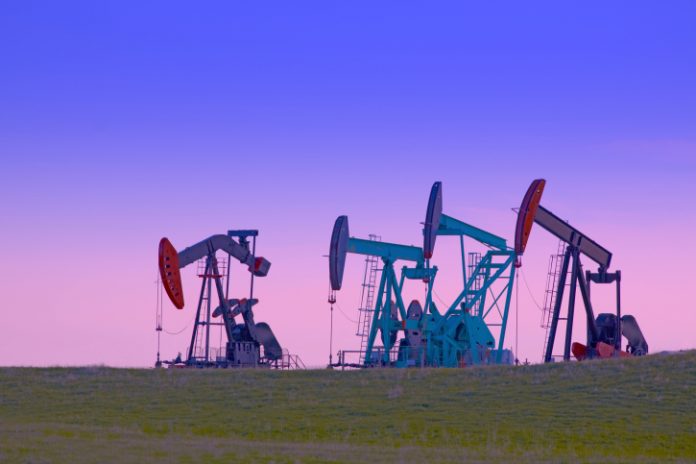(The Center Square) – The U.S. oil and natural gas industry has made “accelerated progress in emissions reductions,” according to a new analysis published by the Environmental Partnership.
Its 2023 annual report found that progress was achieved through American companies’ involvement in eight environmental performance programs spanning the energy supply chain.
“Participating companies continued to reduce their flaring, achieving a 14% reduction in total volumes reported and a 2.4% reduction in flare intensity from the previous year,” the heads of the partnership, Vanessa Ryan, its chair, and Emily Hague, its director, pointed out in the report’s introduction. Flaring reduction occurred as U.S. oil and natural gas production increased by 5.6% and 4%, respectively, during the same time period, they said.
Emissions intensity is measured by the amount of methane emitted or flared equivalent to a produced barrel of oil. Flaring is the process that relieves pressure from the pipeline by burning natural gas, which then releases carbon dioxide and water into the atmosphere.
Unburned natural gas, or methane, released into the atmosphere is known as “fugitive emissions,” a greenhouse gas. Disagreement exists over whether carbon dioxide is a greenhouse gas. The C02 Coalition argues it isn’t, whereas the EPA argues it is, for example.
By burning methane, flaring is preventing greenhouse gases from going into the atmosphere, Texas energy experts have explained to The Center Square.
“Our participants remain committed to reducing methane emissions within their operations through innovative facility design, improvements in operational practices and procedures, advancements in detecting and measuring emissions, and improved accuracy in data emissions reporting,” Ryan and Hague said. From 2011-2021, U.S. operators have reduced methane emissions relative to production by 66% in the largest producing regions, they explained.
The Environmental Partnership’s 102 members are American companies in the oil and natural gas industry responsible for nearly 70% of all U.S. onshore oil and natural gas production that are also committed to improving their environmental performance.
In 2022, members’ actions resulted in a 43% increase from the previous year of the number of monitoring surveys that proactively found and fixed methane emission events. They also reported a 14% reduction in total flared volumes and a 2.4% reduction in flare intensity from the previous year.
Since the partnership launched its flare management program in 2020, members have “advanced best practices to reduce flare volumes, promote the beneficial use of associated gas, and improve flare reliability and efficiency when flaring is necessary,” the report states.
“Typically, high-pressure flares are used when there is a lack of natural gas gathering lines or processing capacity, during facility or downstream facility maintenance, or during unplanned events to safely alleviate pressure,” the report explains. “In these instances, flaring is better for the environment, releasing fewer greenhouse gases than venting the gas directly into the air.” Program participants are reporting data to calculate flare intensity, which measures flare volumes relative to production.
The report points out that as the U.S. industry “has recently led the world in oil and natural gas production, methane emissions from petroleum and natural gas systems have fallen, thanks to industry leadership, a motivated workforce and investment in new technologies.”
Texas-based organizations have pointed out that this progress has been led by Texas, which broke records in every category in 2022.
Texas leads the U.S. in energy production. Natural gas companies in the Permian Basin produce some of the cleanest natural gas in the world, according to data from the World Bank, EIA, Environmental Protection Agency and Rystad Energy.
Texans for Natural Gas, a project of the Texas Independent Producers & Royalty Owners Association, analyzed this data in a recent report. It found that among the top 12 oil and natural gas producing countries, if Texas and the Permian Basin were their own countries, they’d rank 10th and 13th, respectively for having the lowest flared volumes. Russia has the greatest volume, followed by Iraq and Iran.
From 2011 to 2021, methane emissions intensity in the Permian Basin fell by more than 76% as production increased by over 345%, the report found. It also fell by 20% from 2020-2021, according to the Texans for Natural Gas analysis.
To put this in perspective, the Permian Basin accounts for nearly 40% of all oil production and nearly 15% of natural gas production in the U.S. The basin is over 86,000 square miles – roughly 10 times the size of New Jersey. Roughly 250 miles wide and 300 miles long, it has more than 7,000 fields.
If Texas were its own country, it would be the world’s third-largest producer of natural gas and fourth-largest producer of oil.
Bethany Blankley is a contributor at The Center Square.
Originally published by The Center Square. Republished with permission.
To read more about oilfield news, click here.
To read about emissions regulations, click here.


























